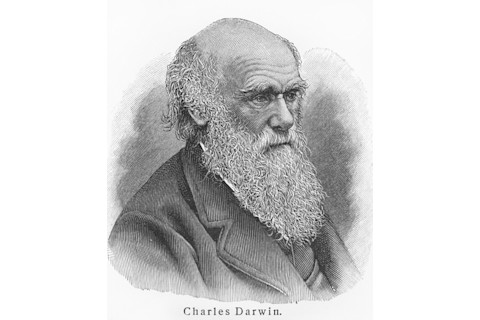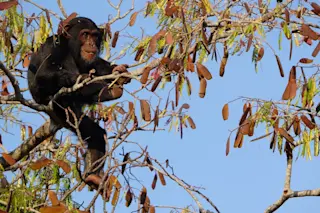The theory of evolution, worked out in the nineteenth century by Charles Darwin and Alfred Russel Wallace, with many tweaks since, is one of the most well-supported theories in science.
Evidence from a wide range of disciplines backs up the basics of the theory. Or, as paleontologist and historian of science Stephen Jay Gould put it in an essay in the May 1981 print issue of this magazine, the theory of evolution is “one of the best documented, most compelling and exciting concepts in all of science.”
For the rest of us, one interesting and sometimes confusing aspect of evolution is the difference between convergent and divergent evolution. Here’s a quick explanation.
Descent With Modification

(Credit:Nicku/Shutterstock)
Before getting into the different pathways of evolution, we need to begin with Charles Darwin's theory of evolution. The idea of descent with modification, as Darwin called his theory, is one of the most elegant and, at the same time, one of the most complex scientific theories.
It’s elegant in its simplicity — it basically states that species change over time as they adapt to their environments. It’s complex in the ways those adaptations occur, the details of which still provide challenge and delight to scientists.
Read More: Why Is Darwin Island in the Galapagos Off-Limits to Visitors?
What is Divergent Evolution?
Divergent evolution, the process in which distinct species diverge from a common ancestor, is probably what leaps to mind when you hear the word ‘evolution.’
This form of evolution occurs when a group of organisms is isolated from others of its species. In animals, this often occurs when one group migrates to a different area or a natural event, such as a change in the course of a river, separates the two groups.
The two groups will gradually develop different forms or traits depending on the demands of their environment. For example, the new environment may have varying predators. This would cause the animals in that area to develop different traits for avoiding those predators.
After many generations, the two groups become dissimilar enough that they are two different species and can no longer interbreed.
Read More: How Does Speciation Drive Evolution?
Divergent Evolution Examples

(Credit:Myra Wippler/Shutterstock)
The classic example of divergent evolution is what is known as Darwin’s finches. (They are actually a type of tanager, not true finches, but that makes no difference to the argument.) When Darwin visited the Galapagos Islands in 1835, he noticed that though they had descended from a common ancestor, the birds on each island had beaks that were unique to that island.
The shape of the beaks depended on what the birds fed on. Birds that subsisted on nuts and seeds had big strong beaks, well-suited for cracking open nuts and crushing hard seeds. Birds that fed on insects had slender beaks, just the ticket for plucking insects from the bark of trees.
Dogs and wolves provide another example of divergent evolution. The two species descended from a common ancestor but are now distinct species. Dogs and wolves look and behave very much alike because of this common ancestor.
Read More: Dogs Have Co-Evolved With Humans Like No Other Species
What is Convergent Evolution?
Convergent evolution, on the other hand, occurs when two or more distinct species develop similar forms or traits that are not due to a common ancestor.
Instead, selection pressure results in similar solutions to similar problems in more than one species — sometimes in a wide variety of species. Convergent evolution is particularly fascinating because it shows how natural selection solves problems in similar ways.
Read More: Evolution Only Thinks About One Thing, and It’s Crabs
Convergent Evolution Examples

(Credit: Shutterstock/Ondrej Prosicky)
Shutterstock/Ondrej Prosicky
The classic example of convergent evolution is flight. Bats, birds and insects all developed the ability to fly. This is due not to a common ancestor but to a similar solution to the same set of problems: the need to get away from predators and to find food, mates and safe places to live and breed.
However, there are some important differences in how these problems were solved in these very different species. The wings of bats, which are mammals, are formed by skin stretched across the animals’ arms and fingers. Birds, on the other hand, have feathered wings. In insects, the exoskeleton evolved into wings.
The course evolution takes depends on many factors. Evolution works with what it has, and when it comes to evolution, it’s all about what works.
Read More: How Do Animals Evolve to Be So Colorful?















